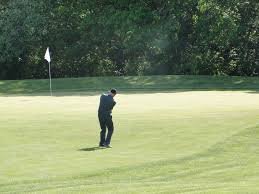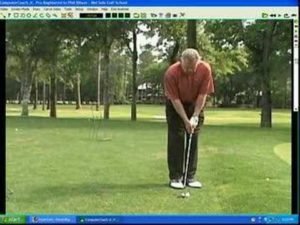Flag In or Out that is the question?
Flag In or Out, that is the question?
Hi, I’m Mel Sole, Director of Instruction at the Mel Sole Golf School, headquartered at Pawleys Plantation Golf and Country Club in Pawleys Island, SC. We conduct 1, 2, and 3-day golf schools, hourly golf lessons, and senior golf schools—any golf instruction program your heart desires. Give us a call at 800-624-4653 or 843-237-4993. We will be happy to book a commuter school or a package that contains accommodations, golf, and golf school.
Golf Blog by the Mel Sole Golf School.
When I watch the PGA and LPGA players, they all seem to do it differently. Some like to take the pin out. Others prefer to leave it in. Which, however, gives the ball the most chance of going in the hole. World-renowned short game expert Dave Peltz gives us the definitive answer via golf.com.
Bring in Dave Pelz.
Dave Pelz has always recommended leaving the flagstick in the hole if you are off the green. Being Pelz, he researched the outcome of balls headed for the green, with both pin in and pin out. The guru of the short game says, “Leave the flagstick in whenever the Rules allow unless it is leaning so far toward you that the ball can't fit.” I agree with Mr. Pelz. I think the pin can also help stop your ball if you have pace or speed problems, which may aid new golfers with distance perception. Here is Dave's full take on the subject.
A few years ago, I was asked by GOLF MAGAZINE to answer an age-old question: When chipping, should you leave the flag stick in the hole or pull it out? I conducted a test and was surprised by the results.
Introducing TruRoller.
All told, TruRoller launched thousands of "shots" at the hole. An equal number with the flag stick in and out, on a number of different greens. At five different parts of the hole. PGA Tour veteran Tom Jenkins, the former lead instructor at my short-game schools, did his best to duplicate those tests.
Although Tom did not control his putts as precisely as the TruRoller, My feeling was that it was important to compare machine and human results. Tom hit more than a thousand putts, the results of which supported the TruRoller's results.
Of course, there were variables in conditions. Those include imperfect green surfaces, the edges of the cup becoming ragged and worn, the hole being higher in back than in front and acting as a "backstop," and so on. But over thousands and thousands of putts, these variables were more than compensated for. What did I learn? Leave the flagstick in whenever the Rules allow, unless it is leaning so far toward you that the ball can't fit. Here are a few special cases.
Flag Stick leans either towards or away from the golfer.
Flag In or Out that is the question?
-
When the flag stick leans either slightly toward the golfer or away, the odds of it helping to keep the ball in the hole increase. With the flag stick leaning away from the golfer, the hole becomes effectively larger. When the flag stick leans toward the golfer, the ball rebounds downward, again helping shots find the hole.
-
When the flag stick is leaning so far toward the golfer that there isn't enough room for the ball, is leaving the flagstick in a bad idea. Check the flag stick before you chip to be sure it is sitting properly in the cup. (The Rules of Golf prohibit you from positioning a flag stick to your advantage. But you may leave a tilting flagstick as is or else center it in the hole.)
-
Even if you don't hit the flag stick dead center, it still will aid you. It proved especially advantageous when chipping downhill and at faster speeds. Leave the flagstick in when you putt from an inch or two off the green. The flag stick will help you make more putts. Unless it is leaning severely toward you. Or it's so windy that it is moving and might knock your ball away.
Source: golf.com Dave Peltz Mel Sole Golf School.
Pictures: Neville Wootton Tim Evanson
Thanks for reading - Flag In or Out that is the question? What do you do on the course?
Related Posts.
Short Siding Yourself – Course Management Wednesday #5.
Flagstick and Green Etiquette – Rules & Etiquette #63.
The key to getting a forward shaft lean – Technical Thursday #81.
Flag in or out when chipping – Short Game Saturday #78.
How to practice sand shots at home. And be a shot game wizard!
PLEASE SUBSCRIBE TO MY CHANNEL, LIKE THIS VIDEO, SHARE IT WITH A FRIEND, LEAVE A COMMENT!


